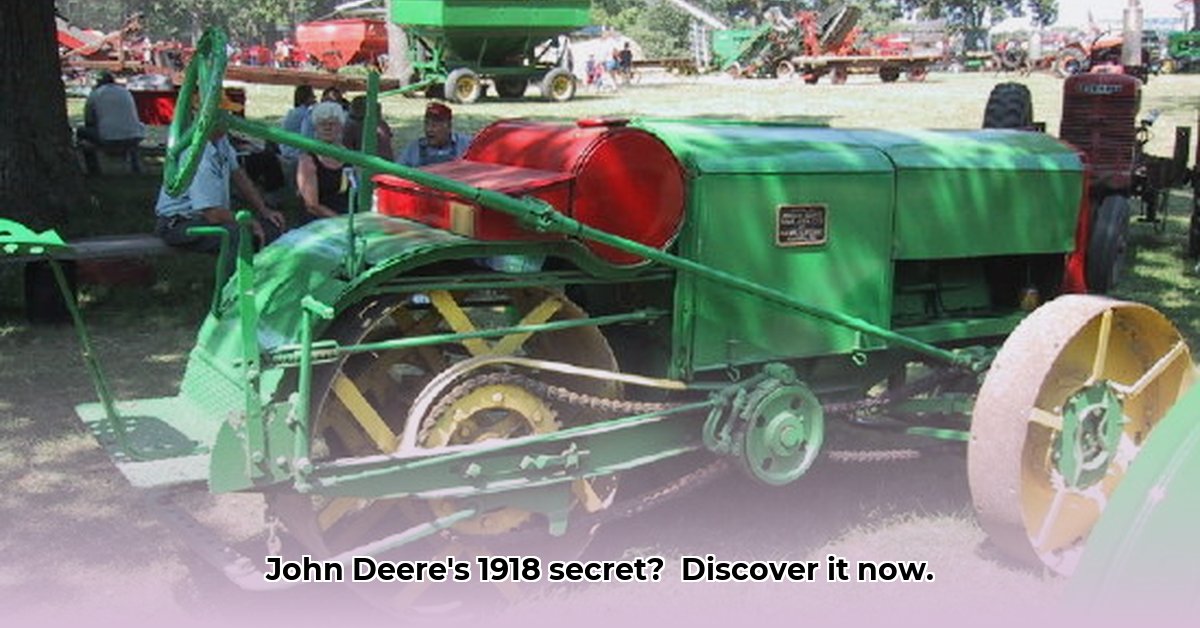
The John Deere Dain tractor, launched in 1918 amidst the turmoil of post-World War I, stands as a compelling case study in the intersection of technological innovation and economic realities. This all-wheel-drive (AWD) marvel boasted features remarkably advanced for its time, including a smooth “shift-on-the-go” transmission and the convenience of a key ignition – a stark contrast to its contemporaries. However, the Dain's story isn't one of triumphant success; instead, it serves as a potent illustration of how even groundbreaking technology can falter in the face of unfavorable market conditions. This article will delve into the Dain's technical innovations, its limited market penetration, and the lasting implications for both agricultural history and modern manufacturing. For more images of similar antique tractors, see this website.
A Technological Leap, Economically Grounded
The Dain's advanced engineering represented a significant leap forward in agricultural technology. Its all-wheel-drive system, coupled with its innovative transmission, promised increased efficiency and productivity. The key ignition system, while seemingly trivial today, represented a significant improvement in user-friendliness compared to earlier models. But this technological prowess came at a considerable cost. Estimates place the Dain's price tag between $1,500 and $1,700 – a substantial sum for farmers grappling with the economic uncertainties of the postwar era. This price point, significantly higher than competitors such as the Waterloo Boy, created a critical barrier to entry for many potential buyers. How could a farmer justify the investment given the considerable economic strain of recovering from a global war? This disparity highlights a critical lesson: even superior technology must be economically accessible to achieve market success.
Limited Production, Lasting Influence
Only 100 Dain tractors were ever produced, a figure dwarfed by the production numbers of competing models. This limited production run suggests a confluence of factors beyond simple cost. Internal company decisions, evolving market dynamics, and perhaps unforeseen engineering challenges likely contributed to the Dain's curtailed lifespan. The tractor's production limitations underscore that the success of a product requires more than just technological superiority. It requires careful market assessment, meticulous cost management, and the foresight to anticipate challenges and adapt accordingly. Despite this, the Dain’s legacy remains; many of its innovative features found their way into subsequent tractor designs, proving its enduring influence on the evolution of agricultural machinery. This demonstrates that even a commercially unsuccessful product can leave a substantial imprint on the technology landscape.
Beyond the Farm: Lessons in Innovation and Economics
The John Deere Dain offers valuable insights for both business and historical analysis. It serves as a powerful illustration that possessing the best technology is not a guarantee of market success. Modern manufacturers should consider the lessons learned from the Dain by conducting thorough market research, evaluating the total cost of ownership (TCO) for the consumer, and assessing economic realities. The high cost of production and the relatively low demand for its features underscore the importance of aligning innovation with the economic realities of the target market. Historians, on the other hand, find in the Dain a fascinating study of the interplay between technological advancement and socio-economic factors in shaping agricultural practices.
Three Pivotal Points:
- High Price Point: The Dain's high cost, relative to its competitors, created a significant barrier to adoption.
- Post-War Economic Uncertainty: The unstable economic environment following World War I suppressed demand for expensive agricultural equipment.
- Limited Production Run: Only 100 units were ever produced, highlighting the challenges faced by the manufacturer in bringing this innovative product to market.
This analysis suggests a need for more research into the specific internal challenges faced by John Deere during the Dain's production. Future studies could shed light on company strategies, production bottlenecks, and internal decision-making that contributed to the project's limited success. The story of the John Deere Dain remains a compelling lesson in the delicate balancing act between technological advancement and its practical application within a defined economic landscape. Its legacy continues to resonate within the halls of both business schools and agricultural historical societies.